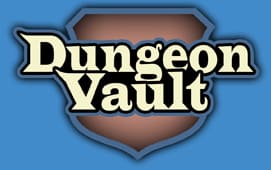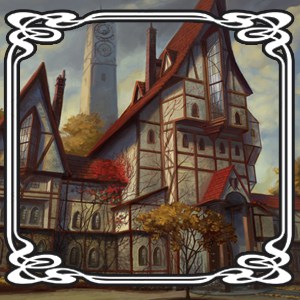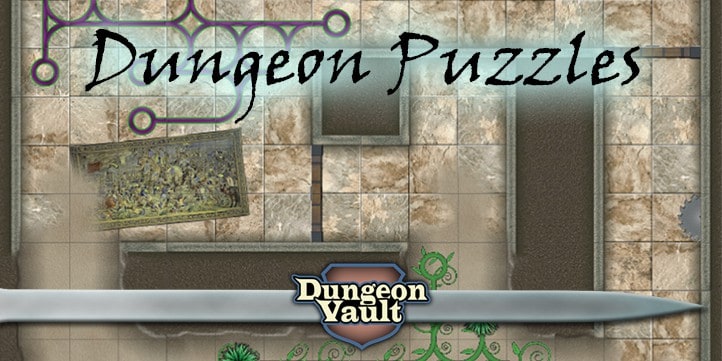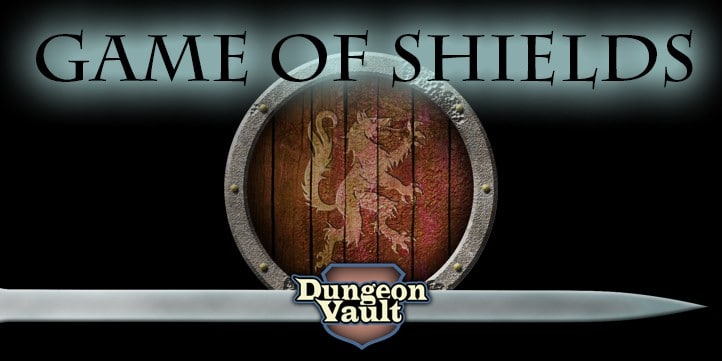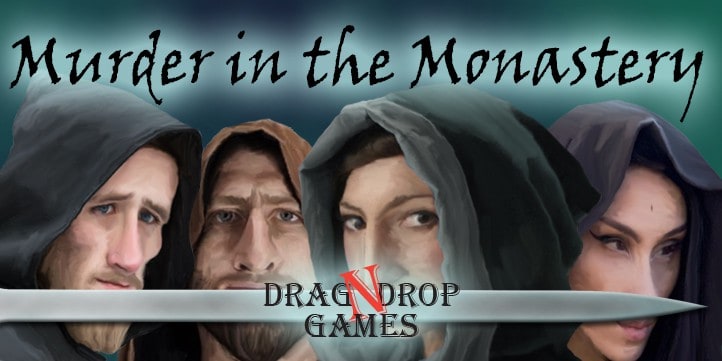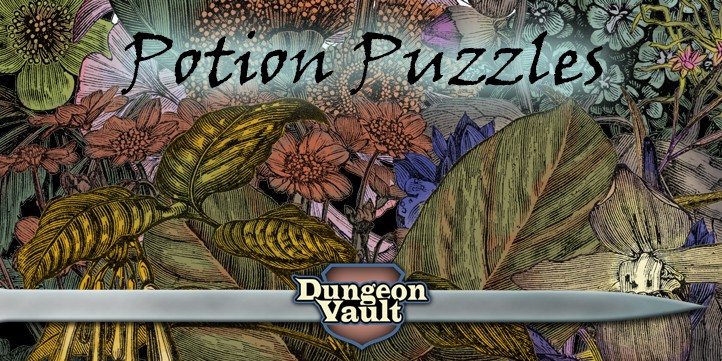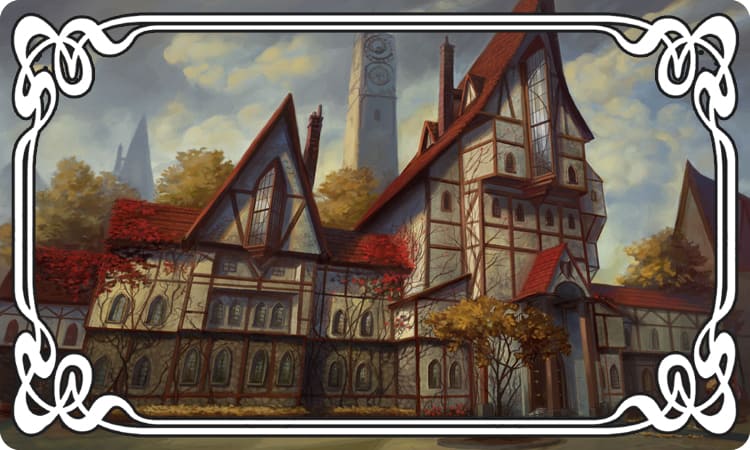
Urban settings offer discovery and excitement for players. Everything in a city is condensed into a great cacophony of sound, sight, and smells. With adventure around every corner, you would expect cities to be bustling with puzzles as well. But dungeon masters often only place puzzles outside cities. And that is a missed opportunity in my opinion.
So in this article I hope to give you some inspiration on how to incorporate clever puzzles into your urban environments.
City Travel Puzzles
Travelling from one side of a metropolis to the other can be a challenge. One way to make city travel more interesting is by using a puzzle system to get around. Here’s how to do that.
- Step 1. You lay out a grid of any side you wish. For this example we’ll use a 5 x 5 grid. NEVER show players this map. Figuring things out for their own IS the puzzle!
- Step 2. Give each square a number and randomly draw a couple of arrows between the squares. Each square symbolises a street, marketplace, of even a district depending on the scale you wish to use. The arrows represent directions to players are able to go without running into an encounter or some serious delays.
- Step 3. Write a specific description for each number. Don’t show the 5 by 5 table to your players. Instead, as they explore different squares of the city puzzle, you read out the descriptions. Be sure to read out the descriptions exactly the same whenever PCs enter the same area. It is the only way PCs have of knowing where they are.
Using descriptions will also make your city come alive in the players’ minds and it’s a good way to have them learn about the many sights your city has to offer. In fact, the size of your grid will probably depend on the number of locations you wish to incorporate.

You can add a finish square if you wish that ends the search but you can just use a number on each square and use this urban map puzzle each time players wish to travel.
I’ll give a couple of descriptions here to illustrate how you can build out your city puzzle.
1. The Wizard District:
Crooked towers, flashy colors, and exotic smells assault your senses. Wizards and magic users of all kind rub shoulders here. But everyone moves aside when the Highmages of Araan walk the streets. For their tower stand higher than all others.
You can easily travel eastward from here.
2. The Weeping Barrows:
Here, at the edge of the city the dead find their final resting place. High on the hills lie wealthy merchants and nobles. Their mausoleums providing shelter for orphans and street rats. In the valley lie the poor. Their gravesites turn to mud when the rain comes. Even here the higher ups lie literally, higher up.
There are gates on the east, west and south side of the market.
3. The Broken Market:
In this dangerous place not even the city watch dares to venture. And yet, there is no crime in the broken market other than what the Faceless allow. Shady dealings are a daily occurrence and you can get everything the Gods have forbidden in this place without having to fear a single pickpocket.
The east and west gates are open at all hours.
The trick to this puzzle is that player never receive the map. They can recreate it by following the descriptions. If you wish to create a larger scale puzzle I recommend using grids within grids. So if players enter the Wizard district, you could create another 5 by 5 grid describing just this district.
Of course, you only do this for the most interesting places. No use in creating something players will never see. But you can also do this on the fly as you are playing. If you have a grid ready, improvising descriptions is easy.
D&D Sewer Puzzles
Players could of course, choose to travel through the sewers of a city instead. This place is more dangerous obviously, and it might just hold the foundations of ancient ruins the modern city was built on.
For traveling through sewers and underground ruins I like to use Dungeon Puzzles. With this puzzle the entire dungeon (or underground complex) IS the puzzle. Players are given 4 by 4 inch tiles which they must lay out correctly according to the puzzle rules.
If they manage to solve the puzzle, you can immediately use it as a map. So really your players are laying out you map for you while you sit back and prepare the next part of the adventure. It works for VTT and real tabletops and you can re-use the puzzle pieces for any setup.
Urban Factions Puzzles
That takes care of travelling thought a city. But what about the politics between the many factions and hidden powers in a city? There are thousands of plots, bribes, alliances, and betrayals going on at any given moment. The players might even wish to join a guild or faction. So how do you use puzzles to make it interesting?
“For playing politics I’ve designed a political puzzle system that is perfect for urban environments called Game of Shields”
The Game of Shields allows players to join a faction or create their own and gain power through solving political puzzles. The political puzzle shows players which other factions they can form alliances with or are in competition with. And each political manoeuvre they decide on leads to an action-packed adventure in the city.
While politics are great, you don’t want it to be all talk and no action. This system creates a balance for you. It is also very visual so players can see the political landscape and know their choices.
I’ve created a special article on doing political puzzles in Dungeons & Dragons which explain the basic rules. And you can find the complete Game of Shields here in my webshop.
D&D Detective Puzzles
If you want to do more of a Sherlock Holmes detective type of puzzle in your city, I’ve got you covered. One puzzle whodunnit adventure I’ve written is Murder in the Monastery. In the original adventure, players must find the monastery which lies in the middle of a swamp. But for our adventure you can place it in a hidden location in your city. The way to get there uses exactly the same puzzle as the one I described first in this article. So it’s easy to switch out.
Next, players investigate the murder of the Abbot. They have to talk to different suspects and solve puzzles to get the pieces of information needed to find the murderer. You can place these puzzles anywhere in your city transforming this into an urban puzzle adventure.
D&D Urban Trade Puzzles
Travel, politics, what else is there in a city? Well, trade of course. One of the first things players often wish to do when entering a city is buy items or sell loot. But what if they could actually create their own magical items?
For magical item creation I created a puzzle system called Potion Puzzles. Don’t let the name fool you. Any magical item can be created with this system. To do so players must first find the formula to creating an item. And pieces of the formula could be hidden in any of the many districts in the city.
Perhaps the thieves guild will trade a line of a formula. Maybe the Royal library – only open to nobles – holds a clue. Finding clues to the puzzle is a perfect opportunity for adventure.
Next, players must find ingredients to brewing a potion, ink, perfume, dye or any other magical liquid that is key to creating a magical item. Finding those can also lead to new adventures.
If players succeed at this puzzle they have learned to create that specific magical item. Of course, they will need more ingredients if they wish to make more items so the DM still has total control, but having your own stall at a marketplace and expanding your trade and income does has its appeal, especially in an urban campaign.
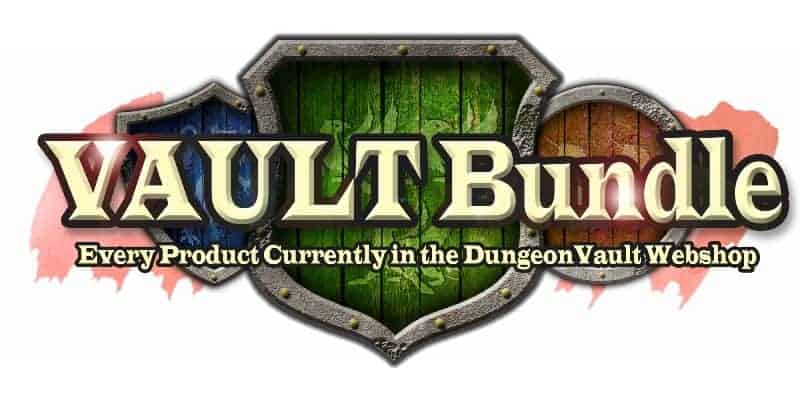
These are just some ideas for running an urban puzzle heavy campaign. Of course, even in a city doors must be locked and magical barriers have to protect hidden secrets. With the VAULT bundle you get hundreds of puzzles. Almost all of these puzzles you can place in an urban environment to make your city come alive, including the ones mentioned in this article. So be sure to check it out!
By Paul Camp
Image credit: Magic the Gathering
